A Florida doctor was known as an opioids expert. He ended up 'poisoning' Brevard community
This is part one of three. This report about a Florida doctor, Monster on the Beach, deals with sensitive issues of violence, opioid addiction and sexual abuse. Take care if you are triggered by any of these topics. Call 2-1-1 Brevard for help if you need counseling.
This following is based on interviews, police documents, court transcripts and law enforcement interviews.
---
Stewart Fraser.
Nicholas Giles.
Lori Darling.
Korianne Lundstrom.
Frank DeLuca.
Andrea Steward.
Michelle Jones.
Stephanie Whitehouse.
Paul Rosaci.
Luis Arguelles.
Ten names.
Ten names representing 10 people whose lives ended because of an opioid addiction.
Ten people who fell victim to a Brevard County doctor who back in the early 2000s ran one of the nation’s most active pill mills out of an unassuming office in unincorporated Indialantic.
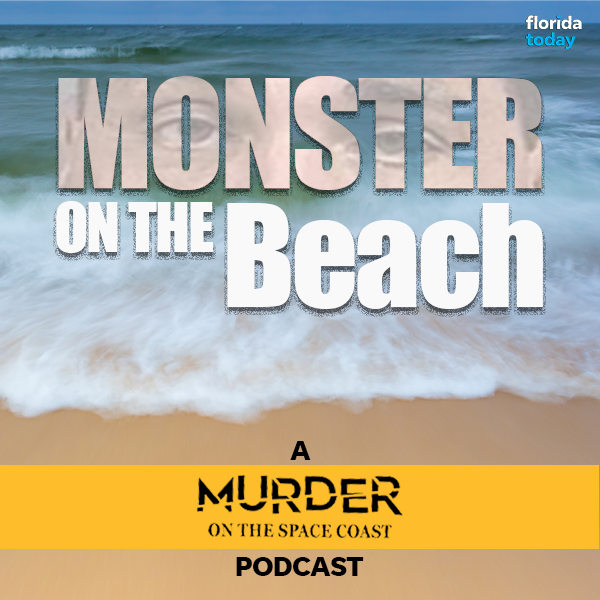
That pill mill, called Indialantic Internal Medicine on State Road A1A, dispensed more opioid prescriptions than the entire state of California.
Lines of addicted people snaked out the front door ready to spend $200 or $400 and leave with more than 100 oxycontin. A hot dog vendor set up shop in the parking lot.
People flew into Melbourne airport to get prescriptions, and cars with license plates from as far away as Virginia filled the roadways. Eventually, chain pharmacies like Walgreens and CVS refused to fill any script written by Dr. John Gayden Jr.
And yet, still he was in business.
Police spoke of their frustration at trying to shut the doctor down. They surveilled, sent in undercover agents and wire-tapped willing patients. But it was not so easy to stop the doctor inside. How do you prove a doctor is practicing bad medicine when the doctor is the presumed expert on what his patients need?
The stakes were high. Beachside residents reported seeing barely coherent teen girls along the streets, mothers stopped walking their children down sidewalks to avoid the people who lay passed out, homes turned into “ghost” properties where excess pills were shared and sold.
“Whatever you say about a person who is distributing drugs on a street corner, they tend to be fueling an existing problem. They tend to be servicing existing addicts,” said federal prosecutor Dana Hill, who used to be part of a federal Drug Enforcement Administration unit that revoked licenses of doctors committing illegal acts.
“Whereas a doctor who is giving out drugs too recklessly, too freely, too casually is often creating new addicts where none existed before.”
Finally, an opportunity to stop Dr. Gayden came thanks in part to a large bag of marijuana and underage teen girls.
And then after losing his practice and his medical license, Gayden faced charges of dispensing oxycodone outside the usual course of professional practice and for no legitimate medical reason. The judge at his trial put it this way: for “poisoning the community.”
It’s debatable whether justice came for the 10 people whose names were read out by U.S. District Judge Carlos Mendoza as he sentenced Gayden to more than 18 years in federal prison in 2018.
“Your client is a monster and not just a monster, an arrogant monster,” Judge Mendoza said.
“I don't want to be lectured by him anymore, and we are doing society a service by making sure there's absolutely no way he can ever do what he did again. This is not just about deterrence. It's about all these people not that he killed, because that's not being alleged here.”
And that’s when the judge read those names.
10 names.
10 people whose lives were lost by opioid addiction.
10 people, who the judge said, are “just some of the people who he profited off of.”
This story you are reading accompanies season 6 of our award-winning podcast, Murder on the Space Coast.
This season and this story is different. It’s not about a particular murder or assault as much as it’s about an assault on a beachside community.
It’s about a scourge that altered and ended lives, a scourge fed by greed and addiction.
This is the story about how an epidemic seen across the nation ripped through Brevard neighborhoods in a way they’re still recovering from.
This is a story about a doctor found guilty of doing harm. This is Monster on the Beach.
Getting pills was that easy
Linda Lundstrom didn’t question why her 20-year-old daughter, Korrianne, needed a set of x-rays taken more than six years earlier for an upcoming doctor’s appointment.
She assumed Korrianne’s knee must be giving her problems again.
As far as Linda knew, her pretty, quitted-witted girl was doing well. The Melbourne High School graduate, born on Christmas Day 1988, had a job at a chain barbecue restaurant and seemed to be succeeding as an independent adult.

It was good she was seeing a doctor again, her mom reasoned, especially if the knee was causing trouble. Plus, Kori was getting too thin.
What her mother didn’t know is that by the time Korrianne brought the old x-rays into her first visit to Dr. John Gayden’s beachside office, Korrianne’s boyfriend had already introduced her to the blissful feeling that came with snorting crushed up “blues,” more commonly referred to as Oxycodone.
“I didn’t even know what they were when I started doing them,” Korrianne would later say. “It was all very new to me at the beginning. This was the first drug that I ever tried besides marijuana.”
She liked the feeling and wanted more of it. She also knew that her boyfriend no longer wanted to share his pills to support her growing habit. He recommended she see his doctor.
After a five-minute visit with Dr. Gayden, Korrianne left his office with a prescription for 120 15-mg Oxycodones. She returned two weeks later and every fortnight after that for a scrip for 120 30-mg Oxycodones.
Her boyfriend had been right. It was that easy.
According to the Mayo Clinic, recommended dosing for oxycodone is about 9 mg every 12 hours or 18 mg a day. Korrianne’s two-week supply of the highly addictive drug was 128.5 mg per day.
After Korrianne’s first few visits, Dr. Gayden’s office stopped taking Korrianne’s insurance. Actually they stopped taking insurance altogether and became a cash-only operation. If Korrianne wanted to continue to see Dr. Gayden, she would need to come up with $500 a month.
That didn’t worry Korrianne at all. At the time, “Blues” had a street value of $20-$30 per pill and Korrianne would put aside a stash for selling.
Brevard doctor became known as "The pill man"
Korrianne’s first visit to Dr. Gayden was on March 2, 2009. By then, the former family physician’s reputation was already well-known throughout Brevard County. According to some reports, he actually referred to himself as "The pill man."
But nearly a decade would pass, and lives end, before a federal judge would use that singular and powerful word — "monster" — to describe the former doctor.
“I think your client knowingly and willfully profited on the addiction and the misery of others,” U.S. District Judge Carlos Mendoza said as he sentenced Dr. Gayden to 18 years in prison.
Pharmacy line out the door
Indialantic Police Chief Mike Connor took a call from Eckerd Pharmacy (it later became a CVS) on the corner of State Road A1A and Fifth Avenue, just a stone’s throw from his desk at the police department. This was three years before Korrianne's first visit to Dr. Gayden.
The pharmacist was concerned about the number of people who had suddenly started showing up to get prescriptions filled.
Connor went to investigate. He noticed the registration tags on the parked cars outside the pharmacy. Many were from Osceola and Orange County. Others hailed from Georgia and Virginia.
He noticed something else, too: the crowds.
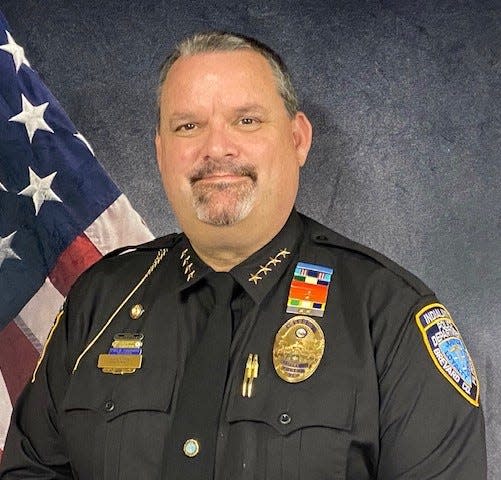
“I'm not exaggerating when I say the line was out the door,” Connor said.
This was very uncommon for the sleepy little beachside town of Indialantic and surrounding unincorporated neighborhoods. Here near pristine beaches lie both wealthy subdivisions and modest but typically well-kept block houses built in the 1960s. Here, you see fire pits in the backyard and surf boards on the front porch.
But now, there was a sudden influx of people, a little rougher-looking than the norm.
Small homeless encampments began popping up on undeveloped and overgrown lots. Police began fielding more “quality of life calls” as residents complained about aggressive panhandling or sketchy characters loitering.
Neighbors began reminding each other to lock their car doors at night or else they might find someone had rummaged through them and loose change and valuables were missing.
The crowd at the pharmacy was part of that change.
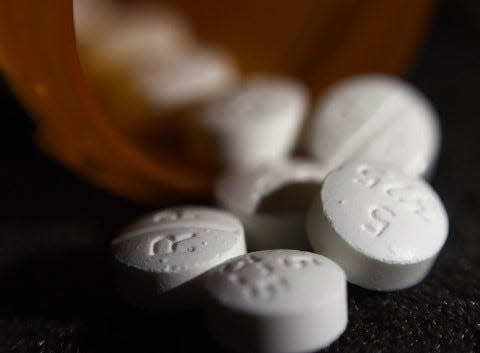
After his initial visit, Connor returned with a video camera, wearing his police badge on a lanyard around his neck. Some people, not happy about the camera, left the line. Others chatted with the detective, telling him they were transporting friends who needed prescriptions filled. Connor presumed they were getting a cut of the pills in return but there was little he could do. The prescriptions were legitimate.
The funny thing though, they were all written by the same local physician, Dr. John Gayden.
After a while, Eckerd joined many of the pharmacies in the area and stopped filling Gayden prescriptions.
Beloved and respected family doctor
There was no way Dr. John Gayden could live up to his father’s reputation, but he tried, for a while anyway.
John Gayden Sr., born in South Carolina in 1923, was a war hero, serving as a bombardier in the U.S. Army Air Corps during World War II. After service, he went to medical school and moved to Melbourne in 1952 where he was incredibly one of only four medical doctors in the city. He was a general practitioner practicing family medicine.
But tragedy struck only two years later when Gayden Sr. contracted polio while on vacation in South Carolina. He spent nine months hospitalized and lost most of the use in his legs.
Showing incredible resolve, Gayden Sr. continued practicing medicine.
He would sit in a wheelchair in his office while doing paperwork or lean on crutches as he tended to patients.
He also remained very active in the community, serving on various boards and becoming a deacon at his church, Eastminster Presbyterian in Indialantic.
He and his wife, Mary, had three children, with John Gayden Jr. being the oldest. Gayden Jr. wanted to follow in his father’s footsteps and studied pre-med at Florida State University before attending the University of Monterrey Mexico medical school.
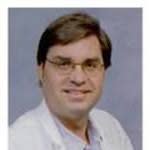
Dr. Gayden graduated from medical school in 1983, married Miriam Mier and went on a honeymoon before spending two months volunteering at a hospital in the south Bronx. According to documents obtained from the Florida Department of Health, Dr. Gayden described the charitable endeavor as providing valuable experience.
He and Miriam would have a son and daughter together.
After finishing his residency, Dr. Gayden moved back to Florida where he worked at a Health First medical walk-in clinic in Cocoa Beach before joining his father’s practice and enjoying hospital privileges at Holmes Regional Medical Center.
His father continued working up until two weeks before his death from cancer in 1990. He was only 67.
By all accounts and many of the online reviews still on the Internet, Dr. Gayden Jr., at first, enjoyed a thriving practice and a solid reputation as a compassionate and empathetic doctor.
“Dr. John Gayden Jr. is one of the BEST and MOST RESPECTFUL persons I know,” read one of the online reviews. “He is excellent not only in his practice, but also as a person. As a matter of fact, some examples of his caring and kindness are charging a very small amount for doctor visits to those without health insurance and to those in times of need. He is also very respectful, for I have been a patient of his for many years since I turned 18.”
In 2004, Dr. Gayden became a partner in the Alpha Medical Company, an expanding enterprise that mainly focused on internal medicine. Dr. Gayden hired several doctors and physician’s assistants as the practice grew. His was a career on the rise.
But only two years later, there were indications of trouble.
Dr. Gayden started missing meetings and patients began complaining that his follow-up care was not what it once was. His colleague, Dr. Hilbert Zeballos, said he noticed something change in Dr. Gayden by the hours he was keeping at the hospital.
“The first thing that I notice is that he began doing rounds at night,” Dr. Zaballos said.
One night, when Dr. Zeballos had to attend to one of his own patients in the hospital at 2 a.m., he saw Dr. Gayden doing his routine rounds.
“That was very surprising,” Zeballos said.
Around the same time (2005-2006), Gayden’s marriage began to fall apart. Miriam Gayden filed for divorce which was finalized in October 2006.
By that time, Dr. Gayden left his family practice and started a pain management clinic. Some would consider this an odd choice, considering what happened at the end of 2006.
Overdose death hits close to home
A week before the Thanksgiving break, on the weekend of Nov. 16, 2006, Dr. Gayden’s 20-year-old son – John Gayden III – made the drive from his dorm at the University of South Florida in Tampa to spend the weekend with his boyfriend in Palm Bay.
According to a Palm Bay police report, Gayden’s son — a graduate of Westshore Junior/Senior High — spent the night partying, doing cocaine, marijuana and Oxycontin.
He went to sleep at about 4 a.m. and never woke. His death was ruled an accidental overdose.
“I think that had a major impact on him as a man and you know, as a person,” said Melbourne attorney Brynn Brito. “And you know, he was a very highly esteemed doctor, as was his father, and a lot of people relied on him. He was a very good doctor.”
Dr. Zeballos said he’s often asked himself if this was the tipping point that sent Dr. Gayden on a downward spiral.
“I have wondered because they are two different people. The Dr. John Gayden I met in 2004: the professional, the competent physician, the friend, the ethical doctor is completely different from the doctor we knew in 2011,” Zeballos said. “They were completely two different people.”
We don’t know where Dr. Gayden’s son got his fatal dose of opioids. Florida Department of Law Enforcement Agent Jason Kriegsman said there was nothing to suggest that Dr. Gayden provided the prescription to his son.
We also don’t know why Dr. Gayden made that switch from family medicine to pain management. But it was around this time that pain management grew into a big business. In the early-to-mid 2000s, there was suddenly a lot of money to be made in this relatively new field of medicine.
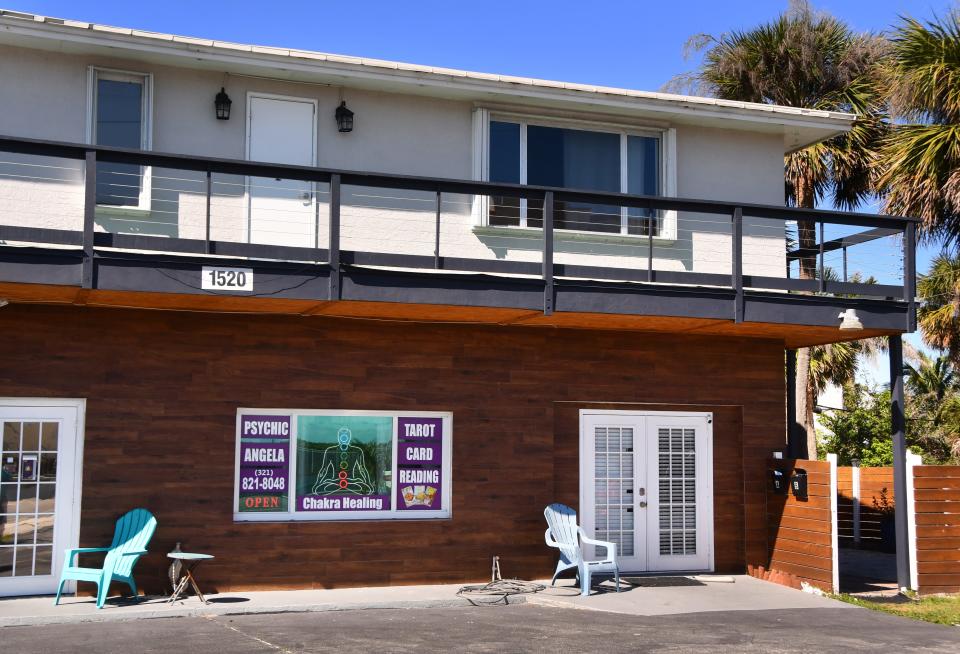
According to Elaine Silvestri, a journalist with Drugwatch, between 1911 and the late 1990s, narcotics and opiates were used very sparingly and even then only to treat post-surgery patients or those at the end of their lives. All that changed in 1995.
Two things happened at that time to cause this change. Number one, that was the year the drug oxycontin was approved by the Federal Drug Administration. Number two, it was right around this time that hospitals and doctors began to get graded by online reviewers or receive ratings on how well they reduced pain.
The pressure was on for physicians to get good grades and positive reviews. And as attorney Brito said, “Gayden sort of left that practice of medicine that he had and began with pain management. That’s not an unadmirable practice. People do need pain management.”
Dr. Gayden didn't just switch the focus of his career, he also changed much about his lifestyle — and he did it all in this sleepy beachside community where it was likely to draw attention. It did.
“It’s a very small town and he was living very large and he very stupidly decided to put a pain management clinic in the middle of 'Perfectville,' you know?" Brito said. "He was advised not to open a pain management clinic on A1A in Indialantic. And he did it anyway.”
Up Next: Part 2, Florida doctor mixed opioids, teen girls.
Contact Torres at jtorres@floridatoday.com. You can follow him on X, the platform formerly known as Twitter @johnalbertorres or on Facebook at facebook.com/FTjohntorres.
This article originally appeared on Florida Today: Florida doctor John Gayden's opioid prescriptions led to federal prison

